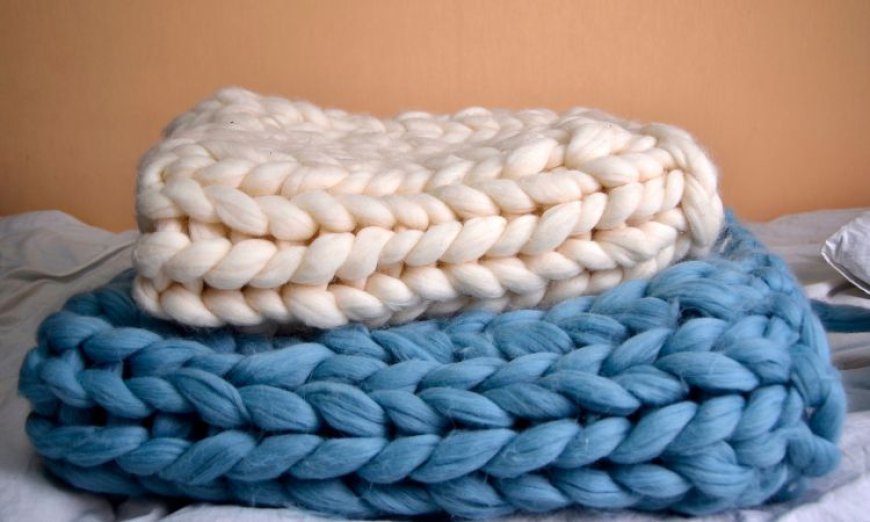Merino Wool Market Size, Share, Trends, Forecast (2024-2032)

The global merino wool market size reached a production volume of about 304 KMT in 2023. The market is projected to grow at a CAGR of 0.4% between 2024 and 2032, reaching a volume of 311.68 KMT by 2032. This slow but steady growth underscores the enduring popularity and versatility of merino wool, a material prized for its softness, breathability, and durability. In this blog post, we will delve into the various aspects of the merino wool market, including its segmentation, regional dynamics, market trends, and future outlook.
Market Overview
Merino wool is a natural fiber obtained from the Merino sheep, renowned for producing the finest and softest wool. This wool is highly valued in the textile industry for its superior qualities, including excellent insulation, moisture-wicking properties, and comfort. Historically, merino wool has been a staple in high-quality apparel and activewear due to its performance and comfort. As of 2023, the market has shown resilience despite economic fluctuations, maintaining a steady production volume.
Market Segmentation
The merino wool market is segmented based on type, weave, application, and end-use. This segmentation helps in understanding the diverse uses and preferences in the market.
By Type
- Worsted: This type is combed to align fibers, resulting in a smoother, finer, and stronger yarn. It is ideal for high-end fashion and suiting.
- Woollen: This type is carded, which results in a bulkier, warmer, and softer yarn. It is commonly used in casual wear and knitwear.
By Weave
- Plain Weave: Simple and durable, plain weave is widely used in various types of garments.
- Twill: Recognized by its diagonal lines, twill weave is known for its durability and attractive appearance, making it popular in both casual and formal wear.
By Application
- Woven: Used in fabrics that require strength and structure, such as suits and jackets.
- Knits: Used in stretchy and comfortable garments like sweaters, t-shirts, and athletic wear.
By End Use
- Apparel: Includes both casual and formal wear, with a significant demand in high-performance and luxury segments.
- Innerwear: Leveraging merino wool's comfort and moisture management properties.
- Socks: Popular for their comfort, warmth, and odor resistance.
- Home Textile: Including blankets, bed linens, and upholstery.
- Other Accessories: Such as scarves, hats, and gloves.
Regional Analysis
The merino wool market is globally diversified, with key regions including North America, Europe, Asia Pacific, Latin America, and the Middle East and Africa.
North America
- Market Size and Trends: The demand is driven by the popularity of activewear and sustainable fashion. Consumers here value the performance and eco-friendly attributes of merino wool.
- Key Players and Market Dynamics: Companies are focusing on innovation and sustainability to capture the market share.
Europe
- Market Size and Trends: Europe remains a significant market, particularly in fashion capitals like Italy and France. There is a growing trend towards organic and ethically sourced wool.
- Key Players and Market Dynamics: European brands emphasize quality and tradition, with a strong presence of luxury and fashion industries.
Asia Pacific
- Market Size and Trends: Rapid urbanization and increasing disposable income are driving demand. China and Japan are leading markets.
- Key Players and Market Dynamics: Local manufacturers are expanding their capabilities, and there is an increasing adoption of merino wool in both fashion and activewear.
Latin America
- Market Size and Trends: Growing awareness of merino wool's benefits is increasing its popularity.
- Key Players and Market Dynamics: Efforts are focused on educating consumers and expanding retail presence.
Middle East and Africa
- Market Size and Trends: Although smaller, the market is growing due to increasing fashion consciousness and demand for premium textiles.
- Key Players and Market Dynamics: Market dynamics are shaped by a blend of traditional and modern retail channels.
Market Dynamics
SWOT Analysis
- Strengths: High-quality, versatile, sustainable.
- Weaknesses: Higher cost compared to synthetic fibers, niche market.
- Opportunities: Growing demand for sustainable and high-performance textiles.
- Threats: Competition from synthetic alternatives and fluctuating wool prices.
Porter’s Five Forces Analysis
- Threat of New Entrants: Moderate, due to the high-quality standards and brand loyalty.
- Bargaining Power of Buyers: High, with consumers demanding transparency and sustainability.
- Bargaining Power of Suppliers: Moderate, with a limited number of high-quality wool producers.
- Threat of Substitutes: High, due to the availability of synthetic fibers.
- Industry Rivalry: Intense, with competition among established brands and new entrants.
Key Trends
- Innovations in Merino Wool Production: Advancements in processing techniques to enhance the quality and functionality of wool.
- Sustainability and Eco-friendly Practices: Increasing focus on sustainable sourcing and environmentally friendly production processes.
- Increasing Demand in High-Performance Apparel: Growth in sports and outdoor apparel markets.
- Growth in E-commerce and Direct-to-Consumer Sales: Brands leveraging online platforms to reach a broader audience.
Competitive Landscape
Major players in the merino wool market include The Woolmark Company, Icebreaker, Smartwool, and Merino & Co. These companies are investing in sustainability initiatives, product innovations, and marketing strategies to strengthen their market positions. The competitive landscape is characterized by a blend of traditional textile companies and innovative new entrants.
Market Forecast (2024-2032)
The merino wool market is expected to witness a gradual growth, driven by the rising demand for sustainable and high-quality textiles. The market is projected to grow at a CAGR of 0.4% from 2024 to 2032, reaching a volume of 311.68 KMT by 2032. Factors such as technological advancements, increased consumer awareness, and the growing trend of eco-friendly fashion are expected to drive this growth. However, challenges such as competition from synthetic fibers and price volatility may impact the market dynamics.
Read Also:
World’s Top 8 Companies in the Global Shrimp Market
Top 6 Companies Leading the Global Tissue Paper Market
Top 4 Leading Companies Explored by EMR for Luxury Yachts Market Across the World
